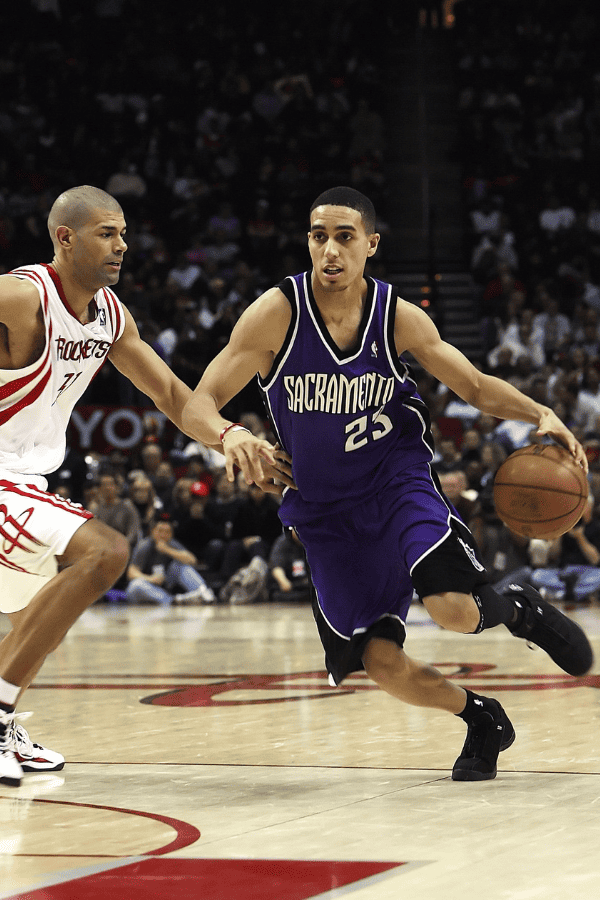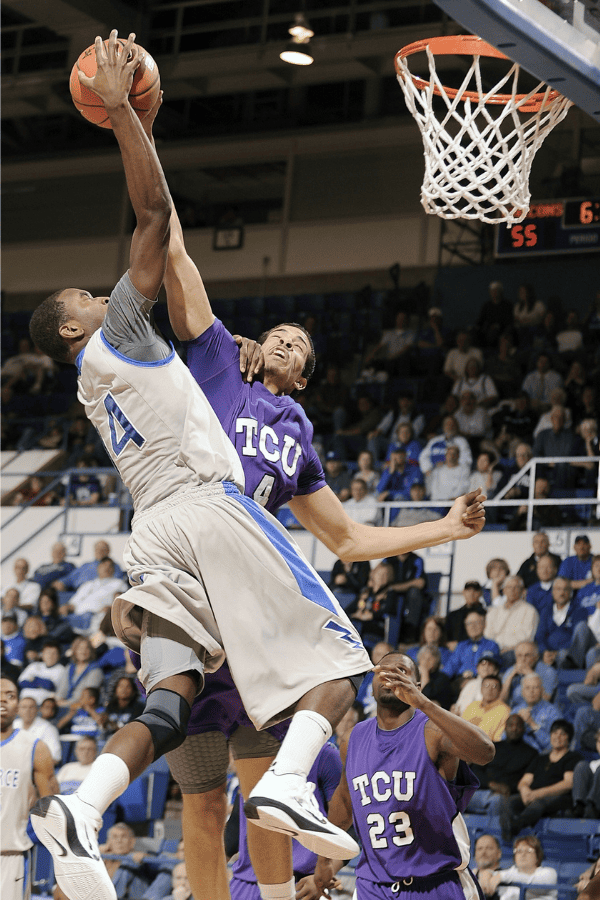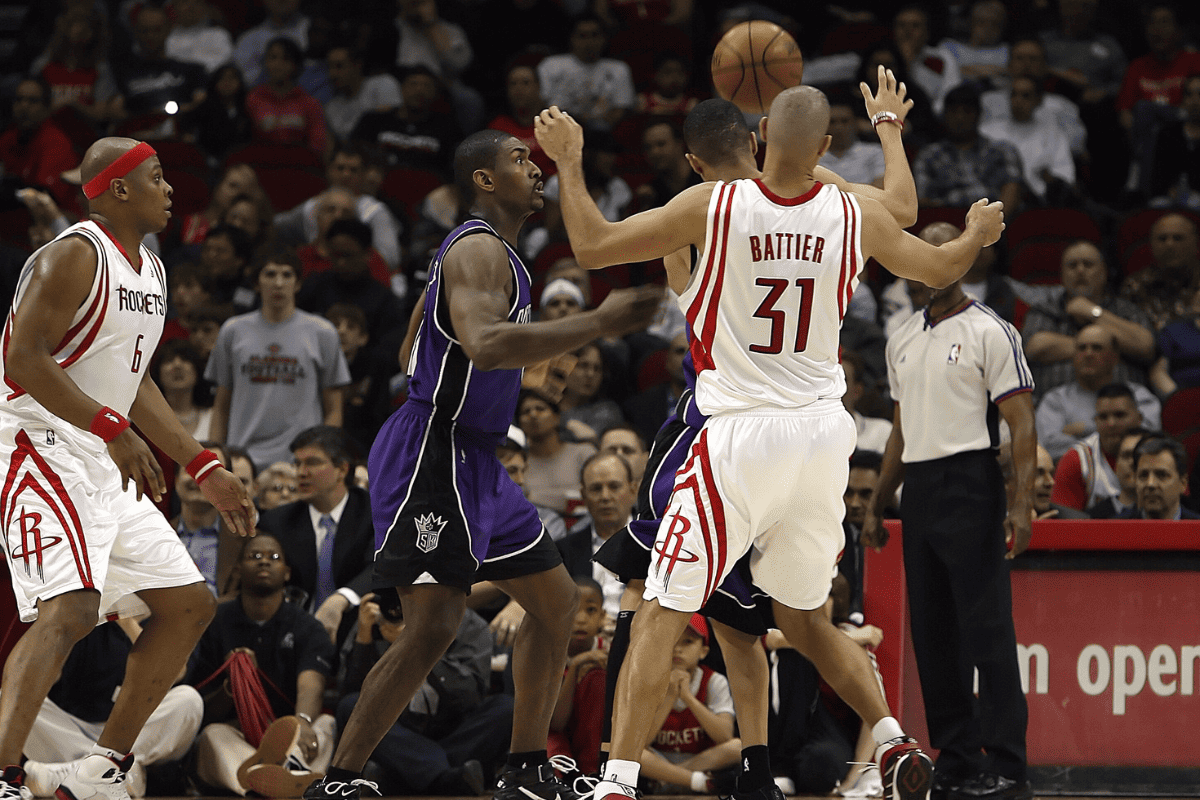What Does a Small Forward Do in Basketball?
One of the five positions in basketball is the small forward, often regarded as one of the most versatile roles in the game. The small forward acts as a bridge between the guards and the big men, providing a unique blend of size, speed, shooting, and playmaking.
They are often expected to contribute across a broad range of aspects, from scoring and passing to defending and rebounding, and in many ways, embody the essence of a true “all-rounder” on the court.
Understanding each position’s role, including that of the small forward, is of paramount importance in basketball. It facilitates team cohesion, enhances strategic play, and enables effective responses to the opposition’s tactics.
In the case of the small forward, with their diverse set of responsibilities, an intricate understanding of the position can be a definitive factor in a team’s victory or defeat.
Basics of the Small Forward Position
The small forward (SF), also known as the ‘three’, plays a crucial role on the basketball court. They are typically positioned closer to the sideline, which is parallel to the longer side of the court.
This strategic placement often provides them with an advantageous view of the action, enabling them to make key decisions and carry out plays that can greatly influence the game’s outcome.
Physical Attributes of a Small Forward
Physically, small forwards often possess an impressive combination of size and agility. While height varies among players, they typically range from 6’6″ to 6’9″ in professional leagues like the NBA.
They need a good balance of strength to compete with larger opponents around the basket, and speed to guard smaller, quicker opponents.
Furthermore, they are often expected to have a good wingspan and athleticism, which contribute to both offensive and defensive capabilities.
Skills and Abilities
In terms of required skills and qualities, a small forward’s job description is rather broad. On offense, they need to be adept at shooting, both from mid-range and from the three-point line.
Some small forwards also serve as secondary ball-handlers and playmakers, meaning good passing skills and court vision are highly valued. They should also be competent in driving to the basket and finishing at the rim.
Defensive Qualities
Defensively, small forwards are often tasked with guarding a range of players from quick shooting guards to stronger power forwards, depending on the opponent’s lineup. This demands excellent defensive skills, versatility, and adaptability.
Furthermore, they are often expected to contribute to rebounding at both ends of the court, requiring them to have good positioning skills and a competitive edge.
Mentally, small forwards need to have a high basketball IQ, understand the game’s strategic elements and make smart decisions in high-pressure situations. Leadership qualities are also a plus, as small forwards often need to coordinate with both guards and big men, acting as a bridge between the perimeter and interior players.
In sum, the role of a small forward is multi-faceted and requires a balanced skill set. A player in this position must be ready to adapt their game to the changing needs of the team, showcasing the true spirit of versatility that defines the small forward position.
Offensive Responsibilities of a Small Forward

The offensive responsibilities of a small forward are manifold, requiring them to be proficient in several aspects of the game to effectively contribute to their team’s offensive efficiency.
Scoring and Shot Selection
- Shooting mid-range and three-point shots: A good small forward needs to be a reliable shooter from various points on the court. Mid-range shooting, especially from the elbow and the wing, is a crucial part of their scoring arsenal.
The evolution of basketball over the years has also emphasized the importance of three-point shooting. This skill is becoming increasingly important for small forwards, as it stretches the defense and opens up lanes for driving and passing. - Driving to the basket: Beyond shooting, small forwards should also have the capability to drive to the basket effectively. This ability requires a mix of speed, strength, ball-handling, and finishing skills. It’s not just about scoring; successful drives can also collapse the defense and create open shots for teammates.
Passing and Playmaking
While traditionally not their primary responsibility, many modern small forwards are also skilled playmakers. They are often expected to make accurate passes, whether it’s swinging the ball around the perimeter, delivering entry passes to the post, or hitting a cutting teammate in stride.
Their size advantage over guards can also help them see over the defense and make more effective passes.
Off-ball Movement and Spacing
Small forwards need to understand how to move without the ball to create scoring opportunities for themselves and their teammates. This can involve cutting to the basket, running off screens, or relocating around the three-point line.
Proper spacing is also critical, as it helps maintain the team’s offensive structure and prevents the defense from packing the paint.
Offensive Rebounding and Second-chance Opportunities
Small forwards can greatly contribute to their team’s offense through rebounding. By crashing the boards on missed shots, they can create second-chance scoring opportunities.
Their combination of size, athleticism, and positioning can often give them an edge over guards in this area. Offensive rebounding is not just about physicality; it also requires a keen sense of timing and a strong understanding of shot trajectories.
The offensive role of a small forward in basketball is multi-dimensional and requires both physical skills and a deep understanding of the game. They need to be ready to take on different responsibilities as required, highlighting their unique position as an all-rounder on the court.
Defensive Responsibilities of a Small Forward
On the defensive end of the court, the small forward carries an equally diverse set of responsibilities, acting as an integral part of the team’s defense strategy.
Here are the primary defensive duties of a small forward:
Man-to-Man Defense

In man-to-man defense, small forwards are typically tasked with guarding the opposing team’s small forward. Given the versatility of the position, this can mean defending a wide array of player types, from sharpshooters to slashers, necessitating adaptability.
It is crucial for the small forward to stay in front of their man, contest shots effectively, and prevent easy drives to the basket. This requires a blend of quickness, agility, strength, and smart defensive positioning.
Zone Defense
In a zone defense, small forwards generally cover the wing or corner areas of the court. Their responsibilities in this defensive scheme include disrupting passing lanes, contesting shots, and preventing penetration into their zone.
This role requires good lateral quickness, length to challenge shots, and a keen sense of positioning and anticipation.
Rebounding
Rebounding is an essential part of a small forward’s defensive responsibilities.
Although they don’t usually tangle with the biggest players under the basket, their combination of size, athleticism, and mobility often makes them effective rebounders.
They need to box out their opponents and aggressively pursue the ball after missed shots. Good defensive rebounding not only denies the opposing team second-chance opportunities but also initiates fast-break opportunities for their own team.
Stealing and Blocking

Steals and blocks are two ways small forwards can actively disrupt the opposing team’s offense.
Stealing involves quick hands and anticipation to strip the ball from an opponent or intercept a pass.
Blocking, on the other hand, is about timing and jumping ability to swat away an opponent’s shot attempt. These plays can swing momentum and provide game-changing moments, but they also require discipline to avoid fouls.
A small forward’s defensive duties are multifaceted, requiring physical skills, strategic understanding, and a proactive mindset. Effective defense from the small forward position can significantly enhance the team’s overall defensive solidity and contribute to game-winning performances.
Understanding Strategies and Tactics
The strategic elements of basketball are critical in both personal performance and team success.
A small forward, given their versatile role, needs to have a deep understanding of different strategies and tactics to excel in their position.
How Small Forwards Fit into Various Offensive Strategies
The role of a small forward can change considerably based on the offensive strategy employed. In a fast-break or transition offense, they may be relied upon to quickly fill the lanes and finish at the rim or spot up for open jump shots.
In a half-court setting, they could act as key ball handlers, initiate the offense, or exploit mismatches against smaller or slower defenders.
In offenses that emphasize ball movement and spacing, such as the “pace and space” or “motion offense”, small forwards must be proficient at quick decision-making, accurate passing, and effective off-ball movement. They should be comfortable shooting from the outside to stretch the defense and create driving lanes.
Conversely, in offenses that rely heavily on isolation plays, a small forward might be asked to create their own shot against single coverage.
The Role of Small Forwards in Defensive Schemes
On defense, a small forward’s role can also vary.
In man-to-man defense, they’ll typically guard the opposing team’s small forward, although they might switch to other players depending on the situation. Their primary goal in this setting is to prevent their man from scoring or creating opportunities for others.
In a zone defense, small forwards usually defend a specific area of the court rather than a particular player. They must be alert to any offensive players entering their zone and be ready to challenge shots or disrupt passing lanes.
In defensive schemes that utilize switching, the small forward’s versatility is especially valuable. They need to be able to guard multiple positions effectively, seamlessly switching onto different players as required.
Adapting to Different Opponents and Game Situations
A top-tier small forward must be adaptable, adjusting their game depending on the opponent and the current game situation.
For instance, they might need to become more aggressive offensively against a poor defensive team, or focus more on rebounding and defense against a team with strong offensive rebounders.
They should also be aware of the game context – for instance, in a close game, they might need to take on more scoring responsibilities or make critical defensive plays.
Overall, understanding the strategies and tactics in basketball is crucial for a small forward. Their ability to fit into different offensive and defensive schemes and adapt to game situations is often the key to their team’s success.
Famous Small Forwards and Their Impact on the Game
The small forward position has been graced by some of the most talented players in the history of basketball.
These players have not only excelled in their role but have also significantly influenced the game as we know it.
Brief Profiles of Notable Small Forwards
- Larry Bird: A legend of the Boston Celtics, Larry Bird was a 12-time All-Star and three-time MVP. Known for his clutch shooting, fierce competitiveness, and exceptional basketball IQ, Bird was one of the most complete players to ever grace the court.
- Julius Erving (Dr. J): Before the NBA, Dr. J was a star in the ABA, where he popularized the art of playing above the rim. Known for his graceful athleticism and acrobatic dunks, Erving was a scoring machine and a formidable defender.
- LeBron James: Often considered one of the greatest players of all time, LeBron James combines power, speed, skill, and an unrivaled basketball IQ. His versatility allows him to play and guard virtually every position, making him the quintessential small forward.
- Kevin Durant: A pure scorer with a silky-smooth shooting stroke, Durant’s height and wingspan make him virtually unguardable. Despite standing nearly 7 feet tall, Durant has the agility and ball-handling skills of a guard.
Analysis of Their Playing Style and How They Exemplified the Role
- Larry Bird: Bird’s playing style embodied the ideal small forward – he could shoot, pass, rebound, and defend. He was a clutch performer who wasn’t the most athletic but used his basketball IQ and competitiveness to outplay opponents.
- Julius Erving: Dr. J brought a level of athleticism to the small forward position that had never been seen before. His high-flying style changed the perception of what small forwards could do, influencing generations of players to come.
- LeBron James: James exemplifies the modern small forward. His combination of size, speed, and skill allows him to dominate on both ends of the court. His ability to lead and make his teammates better is also a crucial aspect of his game.
- Kevin Durant: Durant has redefined scoring from the small forward position. His length, shooting range, and ability to score off the dribble make him a matchup nightmare for opponents. Additionally, he has developed into a capable defender and rebounder, emphasizing the multifaceted nature of the small forward role.
These players exemplify the diversity and impact a small forward can have on the game. Their contributions have helped shape basketball and define the role of the small forward for future generations.
Final Thoughts
Understanding the role and significance of a small forward in basketball is essential for any serious student of the game.
As we have seen throughout this article, small forwards carry diverse responsibilities and must be adept at both ends of the court, offering skills that range from shooting and scoring, passing and playmaking, to rebounding and defending.
In many ways, a small forward is a bridge between the guards (both the point guard and shooting guard) and the big men, often possessing the speed and ball-handling skills of the former, along with the size and strength of the latter. Their versatile skillset allows them to contribute in multiple ways, making them vital to a team’s success.

